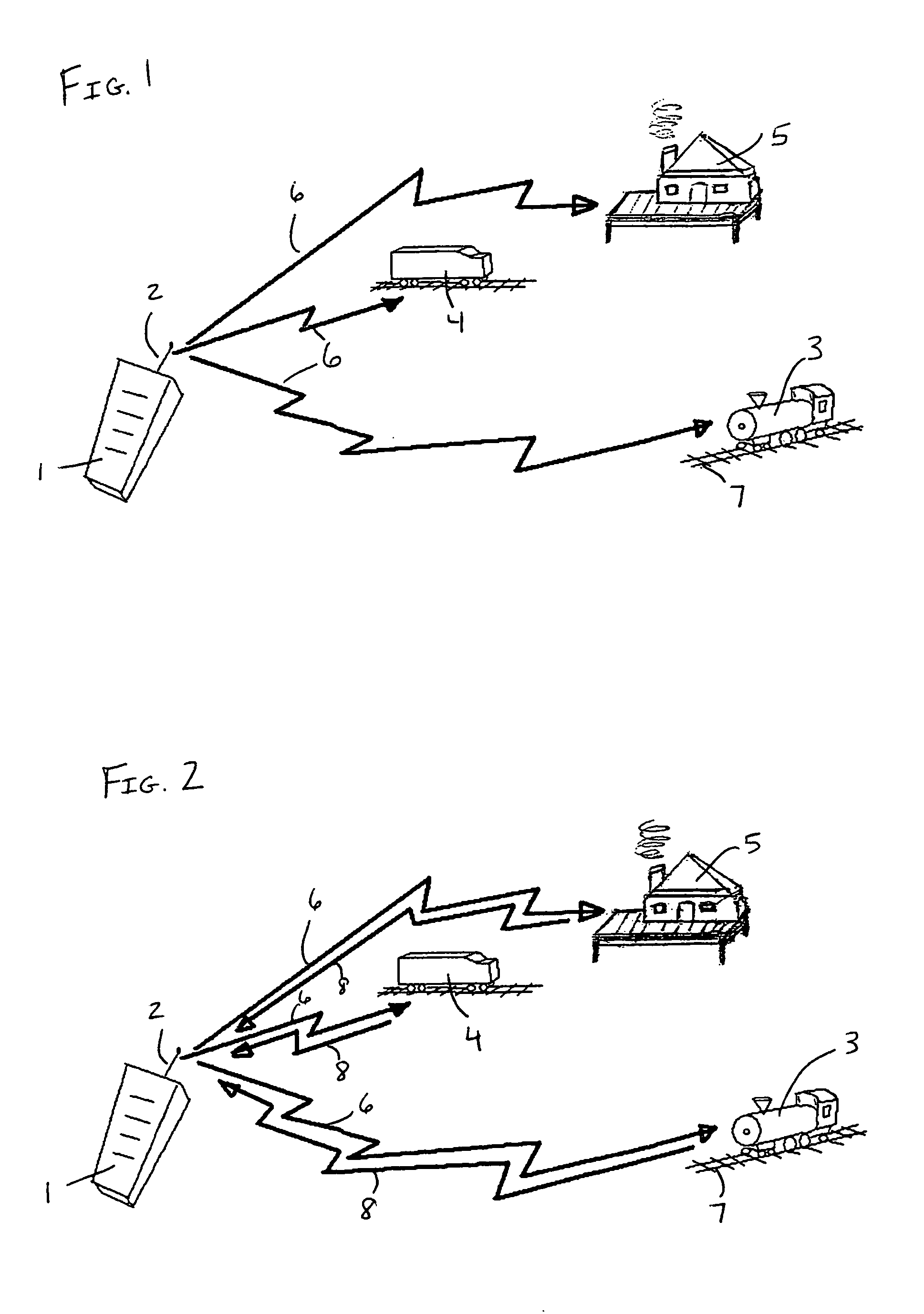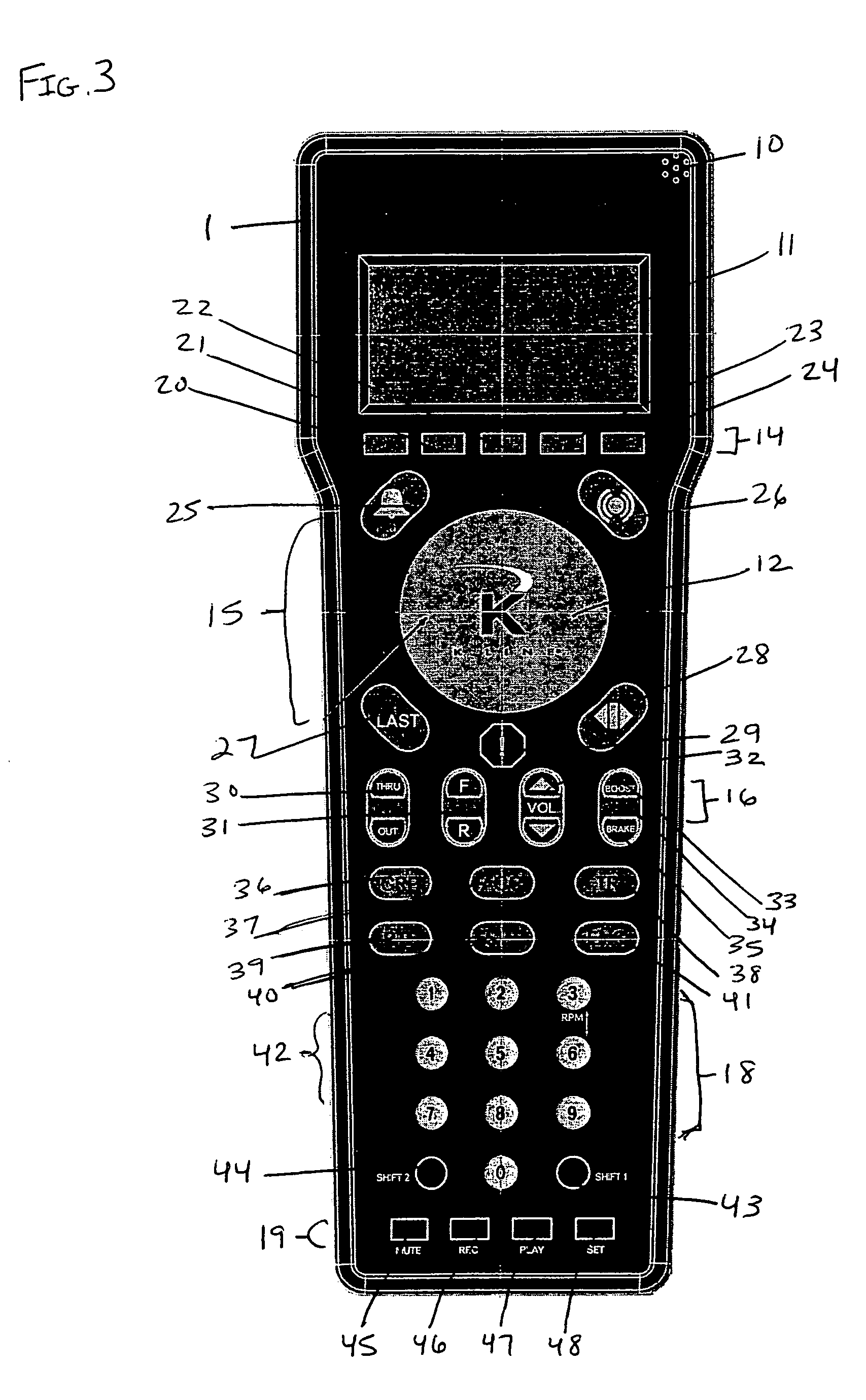Radio-linked, bi-directional control system for model electric trains
a control system and electric train technology, applied in the direction of dynamo-electric converter control, motor/generator/converter stopper, dynamo-electric gear control, etc., can solve the problems of complicating installation, and adding cost and complexity of installation
- Summary
- Abstract
- Description
- Claims
- Application Information
AI Technical Summary
Benefits of technology
Problems solved by technology
Method used
Image
Examples
Embodiment Construction
[0063]Referring now to FIG. 1, a schematic diagram of a unidirectional radio linked control system includes a handheld remote control 1 with an antenna 2 and three train receiving units 3,4,5, for example, an electric train locomotive 3, an operating train car 4 or an operating train layout accessory 5. Arrowed lines 6 represent the radio frequency transmitting signaled commands to the three train units 3,4,5. The controller 1 and the train units 3,4,5 are in direct communication, and no intermediary interface unit is required as in prior art two-step communication schemes. In addition, the signals 6 are transmitted directly to the train units 3,4,5 and not through wires to the track 7 to then be pickup by the train unit as in previous designs.
[0064]FIG. 2 similarly shows a schematic drawing of the remote control 1 and train units 3,4,5 of FIG. 1. However, in addition to the arrowed lines 6 depicting radio linked signals traveling from the remote control to the train units, another ...
PUM
 Login to View More
Login to View More Abstract
Description
Claims
Application Information
 Login to View More
Login to View More - R&D
- Intellectual Property
- Life Sciences
- Materials
- Tech Scout
- Unparalleled Data Quality
- Higher Quality Content
- 60% Fewer Hallucinations
Browse by: Latest US Patents, China's latest patents, Technical Efficacy Thesaurus, Application Domain, Technology Topic, Popular Technical Reports.
© 2025 PatSnap. All rights reserved.Legal|Privacy policy|Modern Slavery Act Transparency Statement|Sitemap|About US| Contact US: help@patsnap.com



